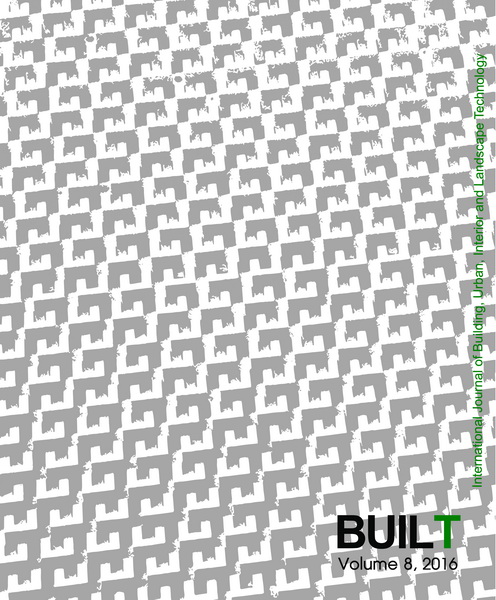The Urban Development Dynamics: Simulating the Spatial Urban Gravitational in Fukuoka Urbanized Area, Japan
Keywords:
Urban development dynamics, Urban planning, Perception of places, Decision making, Spatial distributionAbstract
Understanding urban development dynamics is crucial to advance knowledge regarding urban planning. Building positioning and street layout are the main factors that generate the spatial structure of a metropolitan area. Urbanized areas are intensely populated and designs must include recreational areas. Careful land usage will enhance the attractiveness of an urban development and increase its socioeconomic value. This study applied knowledge of urban dynamics and development phenomena to assist town planners in decision-making processes. The urban gravitation phenomenon was examined using the gravity index which runs on the Geographic Information System (GIS) platform. Urban gravitational maps detailing concentrated urban activity clusters were interpreted and analyzed for four major building types in Fukuoka City, Japan. These included public facility, mixed use, residential, and commercial buildings. Results illustrated the attractiveness characterized by each type of building. Moreover, the spatial concentration of land development reflected the dynamics of urban potential as well as the concept of metropolitan physical transitioning dynamics.
Downloads
References
Assche, K. V. & Verschraegen, G. (2008) . The limits of planning: Niklas Luhmann’s systems theory and the analysis of planning and planning ambitions. PlanningTheory, 7(3), 263-283.
Assche, K. V., Beunen, R., Duineveld, M. & Jong, H. D. (2013). Co-evolutions of planning and design: Risks and benefits of design perspectives in planning systems. Planning Theory 12(2), 177-198.
Girardin, F., Vaccari, A., Gerber, A., Biderman, A. & Ratti, C. (2009). Quantifying urban attractiveness from the distribution and density of digital footprints. International Journal of Spatial Data Infrastructures Research, 4, 175- 200.
Goto, T., Hatakeyama, N. & Yamada, M. (2013). Fukuoka growth 2013-2014 (pp. 79-89). Fukuoka, Japan: Fukuoka Asian Urban Research Center [URC].
Jenks, M. & Colin, J. 2010. Dimensions of the sustainable city 2. Netherlands: Springer.
Krings, G., Calabrese, F., Ratti, C. & Blondel, V. D. (2009). Urban gravity: A model for inter-city telecommunication flows. Journal of Statistical Mechanics Theory and Experiment, 7, 1-9.
Li, F., Fisher, K., Brownson, R. & Bosworth, M. (2005). Multilevel modelling of built environment characteristics related to neighbourhood walking activity in older adults. J Epidemiol Community Health, 59(7), 558-564.
Pan, W., Gourab, G., Coco, K., Manuel, C. & Alex, P. (2013). Urban characteristics attributable to density-driven tie formation. Nature Communications, 4, 1-32.
Rodrigue, J. P., Comotois, C. & Slack, B. (2013). The geography of transport systems (3rd ed.). United Kingdom: Routledge.
Sevtsuk, A. & Michael, M. (2012). Urban network analysis: A new toolbox for measuring city form in ArcGIS. Proceedings of the 2012 Symposium on Simulation for Architecture and Urban Design. Orlando, FL, US.
Sevtsuk, A., Onur, E., Farre, N. & Reza, A. (2013). Capturing Urban Intensity. Proceedings of the 18th International Conference on Computer-Aided Architectural Design Research in Asia (CAADRIA 2013) (pp. 551-560). Singapore.
Taylor, B. D. & Fink, C. N. Y. (2003). The factors influencing transit ridership: A review and analysis of the ridership literature. UC, Berkeley: University of California Transportation Center.
Williams, K., Elizabeth, B. & Mike, J. (2000). Achieving sustainable urban form. London & New York: E & FN Spon.
Downloads
Published
How to Cite
Issue
Section
License
Copyright (c) 2016 International Journal of Building, Urban, Interior and Landscape Technology (BUILT)

This work is licensed under a Creative Commons Attribution-NonCommercial-NoDerivatives 4.0 International License.












